jueves, 11 de junio de 2009
martes, 9 de junio de 2009
domingo, 7 de junio de 2009
Symbols and pubs Vs. symbols and discos


The red rose is widely recognised as the national flower of England. The red rose is on the badge of the English Rugby Union Team.
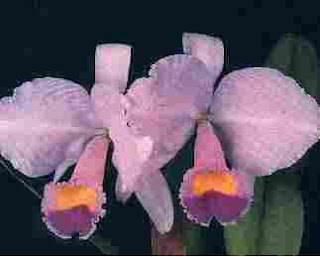 But in Colombia some items related to the national identity are: Colombian coffee has a protected designations of Origin, the largest Emerald in the world: Colombian emeralds have the highest quality; Colombia is the main producer and exporter of roses worldwide but its national flower is the orchid which is one of the most beautiful flowers in the world and selected as National symbol; the Wax palm tree is a palm native to the Andean high altitude valley of Cocora in the department of Quindio, northwest Colombia and it is the National Tree of Colombia. Although they are not Colombian symbols but they identify Colombia around the world we have: Paso fino horse, is the national horse breed; the largest amount of amphibian and heliconias species worldwide and sombrero vueltiao. The national bird of Colombia is the Andean condor, one of the largest birds on Earth.
But in Colombia some items related to the national identity are: Colombian coffee has a protected designations of Origin, the largest Emerald in the world: Colombian emeralds have the highest quality; Colombia is the main producer and exporter of roses worldwide but its national flower is the orchid which is one of the most beautiful flowers in the world and selected as National symbol; the Wax palm tree is a palm native to the Andean high altitude valley of Cocora in the department of Quindio, northwest Colombia and it is the National Tree of Colombia. Although they are not Colombian symbols but they identify Colombia around the world we have: Paso fino horse, is the national horse breed; the largest amount of amphibian and heliconias species worldwide and sombrero vueltiao. The national bird of Colombia is the Andean condor, one of the largest birds on Earth.

The word pub is short for public house. There are 60.000 pubs in the UK (53.000 in England and Wales, 5.200 in Scotland and 1.600 in Northern Ireland). One of the oldest pubs, Fighting Cocks in St. Albans, Herts, is located in a building that dates back to the eleventh century.
Pubs are important part of British life. People talk, eat, drink, meet their friends and relax there. Pubs often have two bars, one usually quieter than the other, many have a garden where people can sit in the summer. Children can go in pub gardens with their parents.
Most pubs belong to a brewery (a company which makes beer) but sell many different kinds of beer, some on tap (from a big container under the bar) and some in bottles. The most popular of British beer is bitter, which is dark and served at room temperature (not hot, not cold). British beer is brewed from malt and hops. Most pubs offer a complete range of beers, local and imported, with German, Belgian and French beers being in demand.
Although most people think pubs are places where people drink alcohol, pubs in fact sell soft drinks (non alcoholic) drinks too. British people drink an average of 99.4 litres of beer every year. More than 80% of this beer is drunk in pubs and clubs.
Opening Hours: British pubs are required to have a licence, which is difficult to obtain, and allows the pub to operate for up to 24 hours. Most pubs are open from 11 to 11.
Pubs have traditional names which date back over 600 years. Some typical names are The Chequers, The White Swan, The Crown, The King´s Arms, The Red Lion and The White Horse. People often refer to the pub by its name when giving directions: e.g. Turn left at the Rose and Crown. There is usually a sign outside the pub showing the pub´s name with a picture.
Pubs are important part of British life. People talk, eat, drink, meet their friends and relax there. Pubs often have two bars, one usually quieter than the other, many have a garden where people can sit in the summer. Children can go in pub gardens with their parents.
Most pubs belong to a brewery (a company which makes beer) but sell many different kinds of beer, some on tap (from a big container under the bar) and some in bottles. The most popular of British beer is bitter, which is dark and served at room temperature (not hot, not cold). British beer is brewed from malt and hops. Most pubs offer a complete range of beers, local and imported, with German, Belgian and French beers being in demand.
Although most people think pubs are places where people drink alcohol, pubs in fact sell soft drinks (non alcoholic) drinks too. British people drink an average of 99.4 litres of beer every year. More than 80% of this beer is drunk in pubs and clubs.
Opening Hours: British pubs are required to have a licence, which is difficult to obtain, and allows the pub to operate for up to 24 hours. Most pubs are open from 11 to 11.
Pubs have traditional names which date back over 600 years. Some typical names are The Chequers, The White Swan, The Crown, The King´s Arms, The Red Lion and The White Horse. People often refer to the pub by its name when giving directions: e.g. Turn left at the Rose and Crown. There is usually a sign outside the pub showing the pub´s name with a picture.
If a church has the name St.Mary´s the nearest pub is traditionally called The Star.
The places where people go out to when they want to take a free time, talk, eat, drink, dance or play some game are the canteen, casinos, coffee bar, nightclubs, pizzerias, restaurants, youth club and discos which are the most common places and they have not the importance that have the pubs in Britain.
Moreover, Colombian people enjoy the carnivals and festival held on various occasions that form a major part of the festivities of Colombia. Cali Fair, held towards the end of December, The Flowers Fair, characterized by the flowers parade, Rock at the park, inviting the participation of rock bands and the traditionally celebrated Carnival of Blacks and Whites are some of the popular Colombian fiestas.(Follow link example http://rio.divertidus.com/flash/visita.swf).
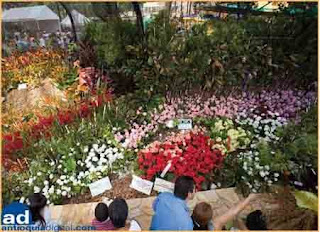
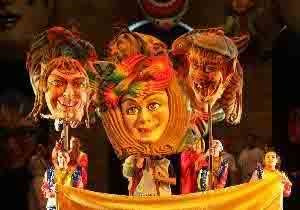

The places where people go out to when they want to take a free time, talk, eat, drink, dance or play some game are the canteen, casinos, coffee bar, nightclubs, pizzerias, restaurants, youth club and discos which are the most common places and they have not the importance that have the pubs in Britain.
Moreover, Colombian people enjoy the carnivals and festival held on various occasions that form a major part of the festivities of Colombia. Cali Fair, held towards the end of December, The Flowers Fair, characterized by the flowers parade, Rock at the park, inviting the participation of rock bands and the traditionally celebrated Carnival of Blacks and Whites are some of the popular Colombian fiestas.(Follow link example http://rio.divertidus.com/flash/visita.swf).



ABOUT THE GAMES
Conkers is the name of favourite children´s game. During the months of September and October, a favourite playground game is conkers. It is a game which has been played every autumn for generations but nowadays fewer children are playing it. We hope to revive this British custom by telling you more about it. The game of conkers is known as “kingers” in some parts of the world.
A conker is the seed of the horse chestnut tree (not the sweet chestnut tree where we get edible chestnuts from),it is a hard brown nut which is found in a prickly casing. The green outer of the seed will turn brown and crack open revealing the conkers inside. They fall from the tree when they are ripe during the autumn months. Each seed pod can house many conkers.
Various games, especially darts, are common features of pubs; many of the old country pubs continue to promote traditional games, such as “Bat and Trap ”which have been played for hundreds of years.
There are many traditional games in Colombia for example hopscotch (golosa),among the more traditional children´s game are Jump Rope, Tag and Chase, Circle Games, Marbles, Tops, Games with sticks and Stones and Games for Toddlers.
FOOD FOOD FOOD!!!!
You may already have several ideas about typical British food, but did you know that the most popular dish in England at the moment is....curry!
British food has traditionally been based on beef, lamb, pork, chicken and fish and generally served with potatoes and one other vegetable. The most common and typical foods eaten in Britain include the sandwich, fish and chips, pies like the Cornish pasty, trifle and roasts dinners. Some of our main dishes have strange names like Bubble & Squeak and Toad-in-the-Hole.
The staple foods on Britain are meat, fish, potatoes, flour, butter and eggs. Many of our dishes are based on these foods.
Fish and chips is the classic English take-away food and is the traditional national food of England. It became popular in the 1860´s when railways began to bring fresh fish straight from east coast to the our cities over night.
The fish (cod, haddock, huss, plaice) is deep fried in flour batter and is eaten with chips. Traditionally, the fish and chips are covered with salt and malt vinegar and, using your fingers, eaten straight out of the newspaper which they were wrapped in. Now-a-days small wooden forks are provided and the fish and chips are wrapped in more hygienic paper.
In the north of England, fish and chips is often served with “mushy peas” (mashed processed peas).
Britain is a tea-drinking nation. Every day we drink 165 million cups of the stuff and each year around 144 thousand tons of tea are imported. Tea in Britain is traditionally brewed in a warmed china teapot, adding one spoonful of tea per person and one for the pot. Most Britons like their tea strong and dark, but with a lot of milk.

Tea breaks are when tea and biscuits are served. The traditional time for tea breaks are at 11:00 (Elevensee) and 4 p.m. in the afternoon.
Colombian cuisine is very diverse and varies depending on the different regions of Colombia. In some areas you will find specialties like roasted ants or guinea pigs while in other areas Colombians wouldn´t even touch those dishes.
Colombia is not a paradise for vegetarians as the Colombian diet includes a lot of meat. In the coastal areas you will find a good variety of fish, lobster and seafood often prepared with a sauce made out of coconut milk. The offer of fresh fruit is overwhelming and many of the varieties you have probably never heard before. Depending on the areas you can have for lunch ajiaco, bandeja paisa with arepa, arroz con coco, and the diverse offer of fresh fruit in Colombia is immense and many of the different types have probably not been tried or seen by most of the people outside the tropics.
 Colombian coffee is famous all around the world and is the traditional drink in Colombia. Unfortunately most of the high quality coffee will be exported and some people say that the coffee you find in Colombia is not of such a high quality. When they ask you if you would like a “tinto” don´t always expect a glass or red wine. In Colombia it is the name for a light and sweet coffee as well. A cup of coffee is offered to the guests too your home, at the office, at the cafeterias and restaurants, and somewhere you go and it´s used in breakfast, lunch or dinner.
Colombian coffee is famous all around the world and is the traditional drink in Colombia. Unfortunately most of the high quality coffee will be exported and some people say that the coffee you find in Colombia is not of such a high quality. When they ask you if you would like a “tinto” don´t always expect a glass or red wine. In Colombia it is the name for a light and sweet coffee as well. A cup of coffee is offered to the guests too your home, at the office, at the cafeterias and restaurants, and somewhere you go and it´s used in breakfast, lunch or dinner.


The staple foods on Britain are meat, fish, potatoes, flour, butter and eggs. Many of our dishes are based on these foods.
Fish and chips is the classic English take-away food and is the traditional national food of England. It became popular in the 1860´s when railways began to bring fresh fish straight from east coast to the our cities over night.
The fish (cod, haddock, huss, plaice) is deep fried in flour batter and is eaten with chips. Traditionally, the fish and chips are covered with salt and malt vinegar and, using your fingers, eaten straight out of the newspaper which they were wrapped in. Now-a-days small wooden forks are provided and the fish and chips are wrapped in more hygienic paper.
In the north of England, fish and chips is often served with “mushy peas” (mashed processed peas).
Britain is a tea-drinking nation. Every day we drink 165 million cups of the stuff and each year around 144 thousand tons of tea are imported. Tea in Britain is traditionally brewed in a warmed china teapot, adding one spoonful of tea per person and one for the pot. Most Britons like their tea strong and dark, but with a lot of milk.

Tea breaks are when tea and biscuits are served. The traditional time for tea breaks are at 11:00 (Elevensee) and 4 p.m. in the afternoon.
Colombian cuisine is very diverse and varies depending on the different regions of Colombia. In some areas you will find specialties like roasted ants or guinea pigs while in other areas Colombians wouldn´t even touch those dishes.
Colombia is not a paradise for vegetarians as the Colombian diet includes a lot of meat. In the coastal areas you will find a good variety of fish, lobster and seafood often prepared with a sauce made out of coconut milk. The offer of fresh fruit is overwhelming and many of the varieties you have probably never heard before. Depending on the areas you can have for lunch ajiaco, bandeja paisa with arepa, arroz con coco, and the diverse offer of fresh fruit in Colombia is immense and many of the different types have probably not been tried or seen by most of the people outside the tropics.
 Colombian coffee is famous all around the world and is the traditional drink in Colombia. Unfortunately most of the high quality coffee will be exported and some people say that the coffee you find in Colombia is not of such a high quality. When they ask you if you would like a “tinto” don´t always expect a glass or red wine. In Colombia it is the name for a light and sweet coffee as well. A cup of coffee is offered to the guests too your home, at the office, at the cafeterias and restaurants, and somewhere you go and it´s used in breakfast, lunch or dinner.
Colombian coffee is famous all around the world and is the traditional drink in Colombia. Unfortunately most of the high quality coffee will be exported and some people say that the coffee you find in Colombia is not of such a high quality. When they ask you if you would like a “tinto” don´t always expect a glass or red wine. In Colombia it is the name for a light and sweet coffee as well. A cup of coffee is offered to the guests too your home, at the office, at the cafeterias and restaurants, and somewhere you go and it´s used in breakfast, lunch or dinner.

ENGLAND AND COLOMBIA...... TOO MANY DIFERENCES II
 Something strange is both the post box and the telephone box have a picture of a crown on them. The crown on the postbox also has the monarchs initials underneath. We have postboxes with VR (Victoria Regina) and GR (Georgeus Rex) still in use today. Victoria Regina is latin for Queen Victorian and Georgeus Rex is latin for King George.
Something strange is both the post box and the telephone box have a picture of a crown on them. The crown on the postbox also has the monarchs initials underneath. We have postboxes with VR (Victoria Regina) and GR (Georgeus Rex) still in use today. Victoria Regina is latin for Queen Victorian and Georgeus Rex is latin for King George.
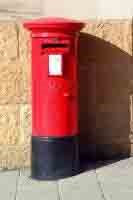
In most of Colombian cities, the telephone cabins are in somewhere at the streets, they are public and have telephones that work out with coins, but the vandals are their worst enemies to keep them in good conditions. We think there is no point of comparison with the cabins of England.
Regarding the post, there aren´t postboxes in the streets, in some offices buildings and houses may have a mail box at the doors of them, but usually people post their letters or documents in order to be sent at the post office like Servientrega, Adpostal, Envia and so one. I think it´s another great difference between the Colombian people´s behavior and those of Britains.

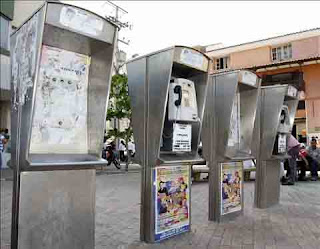
Symbols and pubs England and Colombia... too many diferences

London´s double-decker red buses are world famous. The city has nearly 1.000 routes and buses of many other types and colours also travel on them. You can see loads of them in London. There are two main kinds of buses in London: the red double-decker and the red single-decker. You must buy a ticket before boarding the buses in London. There are ticket machines at most bus stops.
The main places a bus goes to are shown on the front of the bus. Some double-deckers have automatic doors and you pay the driver when you go in. On single-deckers you sometimes buy your ticket from a machine in the bus. Most London buses have a conductor who will come round and collect fares.
There are many sightseeing, open top, buses in London and other cities.

The bus adult single cash fire is L2 for any journey. The One Day Bus Pass is L3.50 and the 7-day Bus Pass is L14.00 (Prices last updated December 2008).The cheapest option is to buy the Oyster card Pre Pay (see form). The fare is L1.00. Oyster uses also never pay more than L3 regardless of how many trips they make each day. (Prices last updated December 2008).
The buses are boarded from the front. Bus routes are identified by numbers and 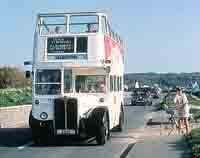 sometimes letters, for example the 73 runs between Seven Sisters and Victoria.
sometimes letters, for example the 73 runs between Seven Sisters and Victoria.
Buses display their route number in large digits at the front, side and rear of the bus.
One way of seeing London´s major sights is on an open-top double-decker bus. Tickets are valid for 24 hours and allow unlimited “hop on/hop off” travel.
Urban transport in Colombia is dominated by people making short trips multiple times per day and can consist of single-decker buses, taxis and vans of different colours, sometimes each transportation company makes difference on their colour.
In addition to the buses; at the great cities like Bogotá, Cali, and Medellín, the sectional governments have improved the urban transport because of the number of people, so there is The Transmilenio in Bogotá, El Mio in Cali and The Metro in Medellin that are the most modern ways of transport in our country.
 sometimes letters, for example the 73 runs between Seven Sisters and Victoria.
sometimes letters, for example the 73 runs between Seven Sisters and Victoria.Buses display their route number in large digits at the front, side and rear of the bus.
One way of seeing London´s major sights is on an open-top double-decker bus. Tickets are valid for 24 hours and allow unlimited “hop on/hop off” travel.
Urban transport in Colombia is dominated by people making short trips multiple times per day and can consist of single-decker buses, taxis and vans of different colours, sometimes each transportation company makes difference on their colour.
In addition to the buses; at the great cities like Bogotá, Cali, and Medellín, the sectional governments have improved the urban transport because of the number of people, so there is The Transmilenio in Bogotá, El Mio in Cali and The Metro in Medellin that are the most modern ways of transport in our country.

There aren´t ticket machines, you must pay to the driver on buses, at Trasmilenio, for example you must pay your fare at the enter on the platform.
People often stand at bus stops in groups, and only queue to get on the bus and the fares changed according to the distances and cities, but we think they fluctuate between $1.000 and $1.500 pesos all over the country.
In London the taxis, are black but in the rest of the country they are different colours. London´s distinctive taxis, black cabs, are as much a feature of city life as its red double-decker buses.
Like buses, black cabs are also being modernised and many are now painted other colours with advertising.
You can telephone for a black cab, hail one in the street or find one in a rank, especially near large railway stations or some major hotels. They carry a yellow “For Hire” sign above the windscreen which is lit up when they are free. To stop one hold out your arm in a purposeful, and determined way. When the taxi stops tell the driver your destination.
 In Colombia as i
In Colombia as i n many other countries of the world, taxis are yellow and you usually can catch one in the streets, or find one in a rank in the airports, department stores, and so one. Middle class, over all, use to commuting to work or to school, by byke, bus or motorcycle; three-wheeled motor van and horse-drawn carriage are still use to carry different stuffs. (Follow the link http://www.youtube.com/watch?v=_HzUjAZvviU)
n many other countries of the world, taxis are yellow and you usually can catch one in the streets, or find one in a rank in the airports, department stores, and so one. Middle class, over all, use to commuting to work or to school, by byke, bus or motorcycle; three-wheeled motor van and horse-drawn carriage are still use to carry different stuffs. (Follow the link http://www.youtube.com/watch?v=_HzUjAZvviU)

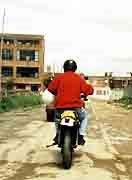

Suscribirse a:
Entradas (Atom)


